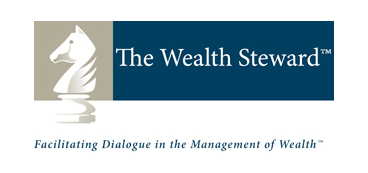By Dan Hallett on August 18, 2010
A few years ago, a research paper by three academics claimed that Canadian mutual funds levied higher average fees than funds in seventeen other countries. Since average Canadian fund fees are high, the media jumped all over this research – despite being incomplete. Reading through many versions of the paper, it became clear that the core data and underlying assumptions were questionable.
Given that inaccurate figures from the paper were being quoted in otherwise reputable publications, I wrote detailed critiques on this paper in this 2006 article and in this piece from 2008. I felt like the lone public voice warning against quoting research on global fee comparisons that hadn’t attempted to tease out regional differences in disclosure and advisory fee structures. So, I was pleased to see a recent article in The Telegraph slamming the British fund industry for hidden charges that can double or triple published expense ratios.
The article appears to validate one of my concerns with the earlier academic research article. In particular, the Telegraph article states:
When a saver invests in an ISA, unit trust or other fund, they are informed that they will pay an “annual charge” – typically 1.2 per cent of the value of their savings. The majority of funds levy exactly the same charge.
But the firm also deducts a range of other vaguely defined fees – covering everything from research to office costs from the savers’ money [similar to Canadian operating expenses].
In particular, funds charge savers fees and commission every time they buy or sell shares. In some funds, hidden fees can be more than three times higher than the publicly-released annual fees.
These fees are nothing new to Canadians; they are operating expenses and costs incurred by funds when trading stocks. But a more complete total cost calculation offers interesting insight.
The Telegraph article uses Morningstar data in citing a typical expense ratio of 1.7% for U.K. funds. The article further pegs typical trading commissions at another 1.35% per year. By comparison, Canadian expense ratios are higher – I calculated 1.9% for all funds or about 2% excluding money market funds – but trading commissions are seemingly half of the U.K. figure found in the Telegraph article.
I haven’t done a study of U.K. fund fees but on the surface, this Telegraph article simply confirms my central critique of the academic paper – i.e. total shareholder costs weren’t equitably counted across all countries studied.
The academic paper, which used 2002 fee data, shows U.K. expense ratios at 1.3% vs. 2.2% in Canada. If we add the above trading commission estimates we get total fund costs of 2.6% in the U.K. compared to 2.8% in Canada. Only looking at expense ratios, Canada appears to be almost twice as expensive as the U.K. A more complete fee picture, however, makes them almost identical. Canadian fees may even be more competitive using more current data.
Then there is the issue of advisory fees, which are mostly embedded in Canadian fund fees so they’re counted more than in fund markets like the U.S. or the U.K. But the academic study did not attempt to count advisory fees that investors pay separately on lower-fee funds. I have no doubt that U.S. funds are hands-down the world’s cheapest. While Canadian fund fees are higher than I’d like, on average, I can’t help but speculate that Canadian funds are more competitive than we realize when all costs are counted.
My aim isn’t to defend the fund industry. I simply maintain that no study is sufficiently complete to make meaningful global comparisons of the total costs that investors bear to invest in and hold mutual funds. Until that happens, any statement regarding where Canadian fund fees rank among its global peers is simply speculation.
More importantly, I’ve argued that the debate over average fees is simply academic. In the April 2008 issue of Investment Executive I reason that average fees don’t matter if we have enough breadth of choice to satisfy do-it-yourself investors and advice-seeking investors (whether their advisors are paid by commissions or separately-billed fees). In other words, averages are meaningless if everyone has what they need.
(Post Script: For a related story, see Canadian Fund Fees Revisited which was published shortly after this post.)
- Piling into U.S. stocks? Don’t Expect the Past Decade to Repeat - January 15, 2025
- The S&P 500’s Three Surprising Traits - November 6, 2024
- Savvy DIY Investors Must Plan For Succession - September 4, 2024



